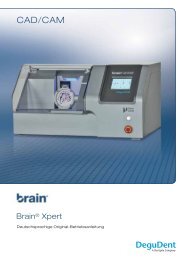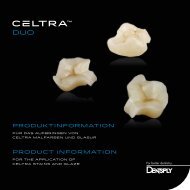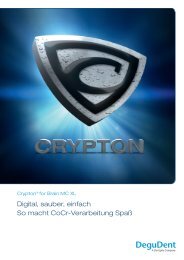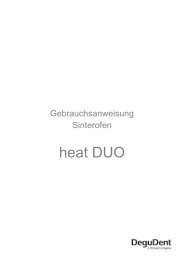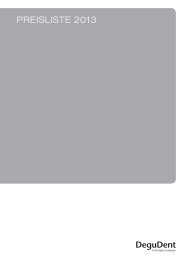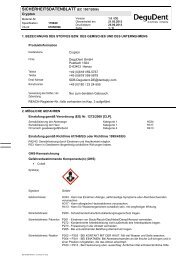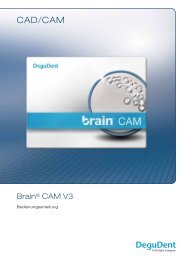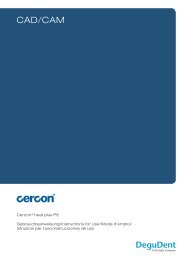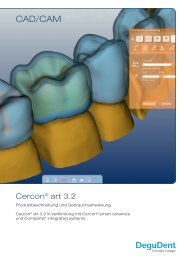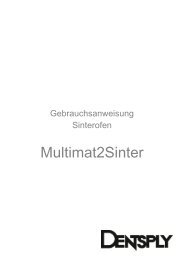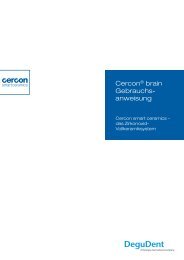Create successful ePaper yourself
Turn your PDF publications into a flip-book with our unique Google optimized e-Paper software.
This alloy should not be delivered to patients or processed by persons with a known hypersensitivity<br />
to one of its components.<br />
Adverse effects: Reactions that may occur are allergic reactions against metals contained in the<br />
alloy or paraesthesia caused by electrochemical reactions. Systemic side effects caused by metals<br />
contained in the alloy have been reported in isolated cases.<br />
Interactions: Avoid occlusal and proximal contact with different alloy types.<br />
Processing:<br />
Modelling: Before modelling, the dies should be coated with die spacer. The crown should be modelled<br />
to reduced anatomical shape. Care should be taken in the modelling process to ensure that<br />
no sharp angles or edges are created that might later result in cracks in the ceramic veneer.<br />
When modelling and finishing the frameworks, make sure to maintain a minimum wall thickness of<br />
0.3 mm for single crowns and 0.5 mm for abutment crowns.<br />
Sprueing: If single-crown sprueing is preferred to the beam-casting method, the sprues should<br />
have a diameter of 3–4 mm. When using the beam-casting method the following sprue dimensions<br />
should be observed.<br />
Sprue from the cone 3 – 4 mm diameter<br />
Transverse sprue (beam) 4 – 5 mm diameter<br />
Connection to crown 3 – 3.5 mm in diameter and 5–8 mm in length<br />
15



